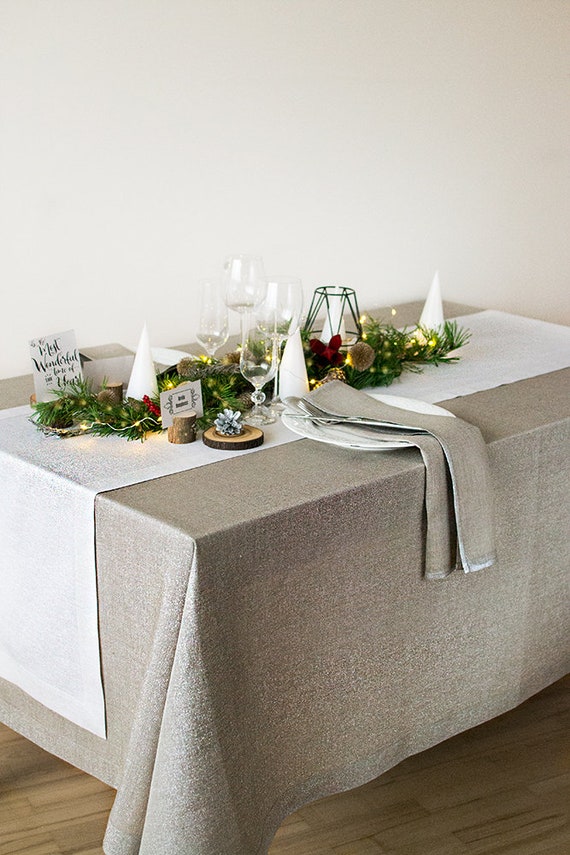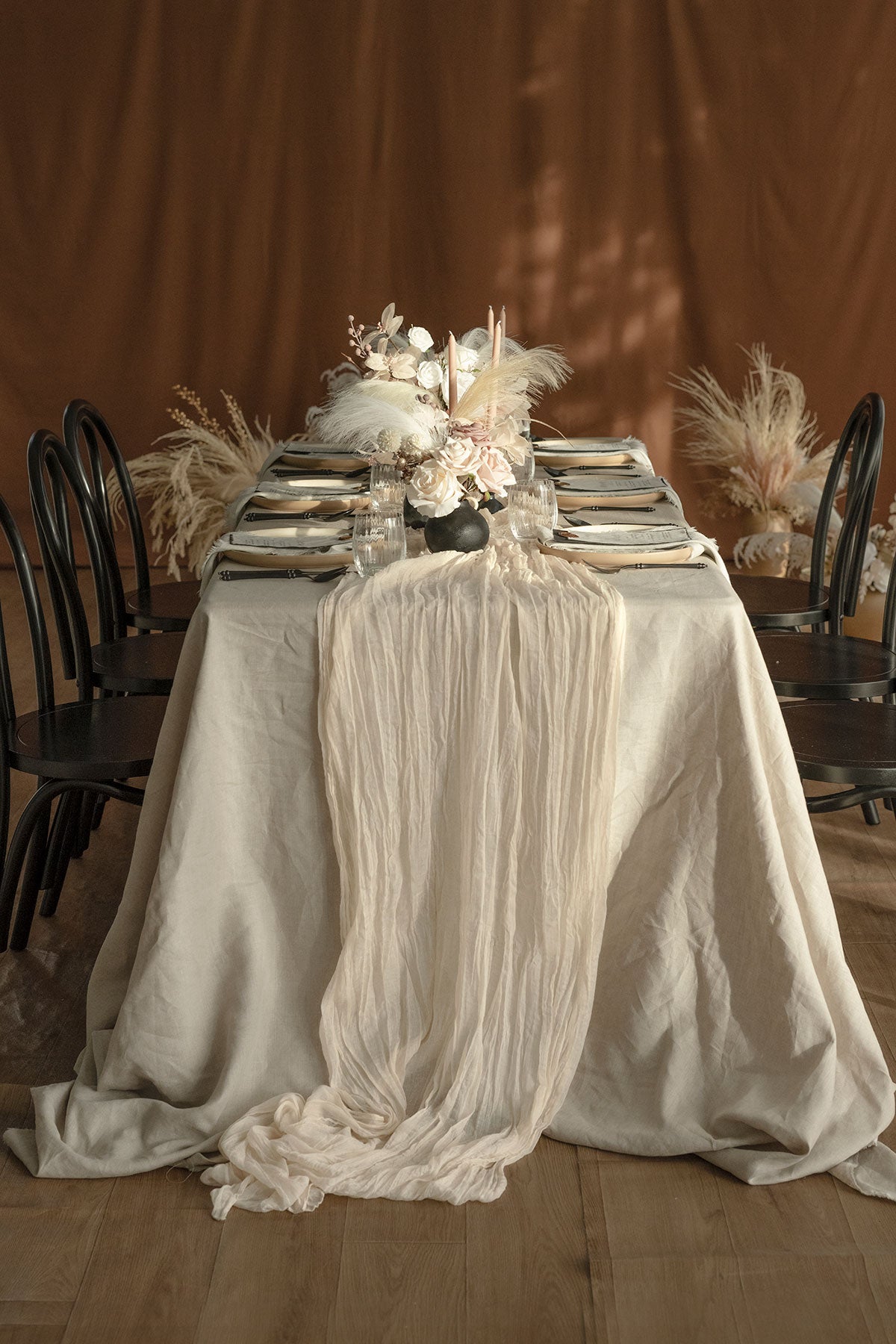Linen Textile Advancements: Checking Out Modern Trends and Creative Applications in Style and Fabric Industry
From lasting production methods to cutting-edge weaving modern technologies, the advancement of bed linen is improving the landscape of the fabric market. As we delve right into the worlds of innovative design applications and the appearance of bed linen blends and hybrid textiles, a brand-new chapter unravels in which linen's role in future fabric advancements takes center stage.
Sustainable Practices in Bed Linen Production
Lasting methods in linen manufacturing have become significantly important in the textile sector's efforts to minimize ecological impact and advertise ethical sourcing approaches. Linen, a natural fiber derived from the flax plant, supplies a series of advantages such as biodegradability, breathability, and sturdiness. However, standard methods of bed linen manufacturing can involve substantial water consumption, pesticide usage, and energy-intensive procedures.
To address these difficulties, many textile suppliers are adopting sustainable techniques throughout the linen manufacturing process. This includes sourcing flax from natural ranches that avoid dangerous chemicals and chemicals, executing water-efficient retting methods to remove fibers from the flax stalks, and making use of environmentally friendly dyes and coatings. Additionally, some companies are purchasing eco-friendly power sources to power their production facilities and reducing waste with recycling and upcycling campaigns.
Technical Advancements in Linen Weaving
With the growing focus on lasting techniques in bed linen manufacturing, the fabric industry is now seeing a surge in technological improvements particularly targeted at changing the art of linen weaving. These developments are reshaping the way linen materials are created, using raised efficiency, top quality, and imagination in weaving strategies.
Among the vital technical innovations in bed linen weaving is the assimilation of digital looms. These advanced looms are equipped with software program that permits for complex and complicated designs to be woven with precision. By digitizing the weaving procedure, suppliers can attain higher consistency and accuracy in their linen textiles.
In addition, innovations in thread spinning innovation have enabled the manufacturing of finer and even more resilient linen yarns - table cloths. This causes softer and smoother linen fabrics that preserve their top quality even after multiple usages and washes
In addition, the advancement of environment-friendly dyeing processes and finishes for bed linen materials is gaining grip. These sustainable methods not only minimize the ecological impact yet likewise accommodate the boosting consumer need for morally created textiles.
Creative Layout Applications for Linen
Cutting-edge artistic techniques are progressively shaping the creative style applications for bed linen in the fabric industry. Linen's natural aesthetic charm and capacity to blend with other materials make it a favored selection for creating distinct garments and accessories that provide to the eco aware consumer.
Furthermore, designers are try out bed linen in home style, using its resilient and breathable nature to craft elegant home furnishings such as drapes, bed linens, and furniture. The structure and drape of linen bring a feeling of refinement and find more information comfort to indoor spaces, including a touch of style to modern homes.

Linen Blends and Crossbreed Fabrics

Hybrid fabrics, on the various other hand, take the concept of mixing a step further by integrating additional elements such as metallic threads, recycled materials, or conductive fibers. These cutting-edge textiles not only broaden the layout opportunities but also introduce functional aspects like conductivity, antimicrobial homes, or boosted resilience. Crossbreed materials are significantly being made use of in different sectors, including style, interior decoration, and technological fabrics, where the demand for multifunctional materials gets on the surge.
Bed linen's Duty in Future Fabric Innovations

In the world of future textile developments, linen is anticipated to be a vital player in the growth of innovative functional materials. Researchers and designers are discovering means to boost bed linen's integral high qualities through technical improvements, such as including wise fabrics, nanotechnology, and performance surfaces. These developments aim to boost linen's efficiency qualities, making it appropriate for a wider variety of applications, from activewear to protective clothing.
In addition, the combination of linen with various other natural or synthetic fibers opens up endless possibilities for producing unique fabrics with special properties and functionalities. By leveraging bed linen's attributes and checking out innovative blends, the fabric market is positioned to introduce amazing developments that deal with developing consumer requirements and sustainability needs.
Conclusion
To conclude, the exploration of sustainable methods, technical innovations, imaginative layout applications, linen blends, and its function in future fabric technologies highlight the continual development of linen fabric in the contemporary layout and textile sector. With a concentrate on advancement and creativity, the versatility and eco-friendly nature of bed linen make it an important product for manufacturers and designers alike, leading the way for further developments and improvements in the area of textiles.
As we dig into the realms of innovative style applications and the development of bed linen blends and crossbreed textiles, a new chapter unfolds in which bed linen's function in future fabric developments takes center phase.
Checking out the blend of bed linen with other textiles has actually led to the introduction of cutting-edge blends and hybrid textiles in the modern textile industry. Linen blends offer an one-of-a-kind mix of the characteristics of bed linen with those of various other fibers, resulting in materials that have enhanced residential or commercial properties such as raised sturdiness, enhanced draping, and lowered wrinkling.The evolution of bed linen blends and crossbreed fabrics has established the phase for Bed linen to play a crucial role in driving future textile innovations.In the realm of future fabric innovations, bed linen is anticipated to be a vital player in the development of sophisticated functional materials.